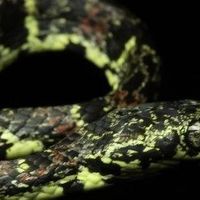Login
Subscribesnails

Genome Spotlight: Black Abalone (Haliotis cracherodii)
Christie Wilcox, PhD | Jun 23, 2022 | 3 min read
The researchers who constructed the first reference genome for this critically endangered mollusk say it will assist restoration efforts.

Rogue Mitochondria Turn Hermaphroditic Snails Female: Study
Patience Asanga | May 19, 2022 | 3 min read
The accidental finding marks the first time a phenomenon called cytoplasmic sterility, known to occur in plants, has been found in animals.

Can Single Cells Learn?
Catherine Offord | May 1, 2021 | 10+ min read
A controversial idea from the mid-20th century is attracting renewed attention from researchers developing theories for how cognition arises with or without a brain.

Image of the Day: Lefties
Chia-Yi Hou | May 15, 2019 | 1 min read
Snails with a gene knocked out by CRISPR grow with their shells coiling in the opposite direction.

Caught on Camera
The Scientist Staff | Dec 1, 2018 | 1 min read
Selected Images of the Day from the-scientist.com

Image of the Day: Uncovered
Sukanya Charuchandra | Jul 12, 2018 | 1 min read
Researchers discover cells in the early life stage of the Schistosoma mansoni parasite that contribute to adults’ reproductive systems.

Image of the Day: Snacking on Snails
Sukanya Charuchandra | Jun 20, 2018 | 1 min read
Five newly identified species of snakes suck the mollusks right out of their shells.

Prospecting for Painkillers
The Scientist Staff | Dec 31, 2017 | 1 min read
Cone snail venom researcher Mandë Holford discusses the therapeutic potential of toxins found in animals.

Memories Erased from Snail Neurons
Diana Kwon | Jun 28, 2017 | 2 min read
Scientists block particular enzymes to remove the cellular signatures associated with specific memory types.

Week in Review: October 13–17
Jef Akst | Oct 17, 2014 | 4 min read
Snail not extinct after all; results too good to be true?; mice need myelin production for motor learning; keeping the brain young; the evolution of archaea

Fewer Female Snail Penises
Tracy Vence | Jan 14, 2014 | 1 min read
Researchers are now spotting fewer cases of imposex—in which female sea snails develop male sexual organs—as a result of a chemical ban instituted in 2008.

Shell Sculpture
Dan Cossins | Sep 1, 2013 | 3 min read
A mathematical model explains the physical mechanisms behind the formation of seashell spines, an insight that could shed light on the convergent evolution of the trait.
Electrified Snail
Jef Akst | May 29, 2012 | 1 min read
Enzyme-coated electrodes turn the tiny invertebrate into a powerful fuel cell.
Electric Molluscs
Megan Scudellari | Mar 14, 2012 | 1 min read
Snails with implanted electrodes generate electricity via metabolism.
